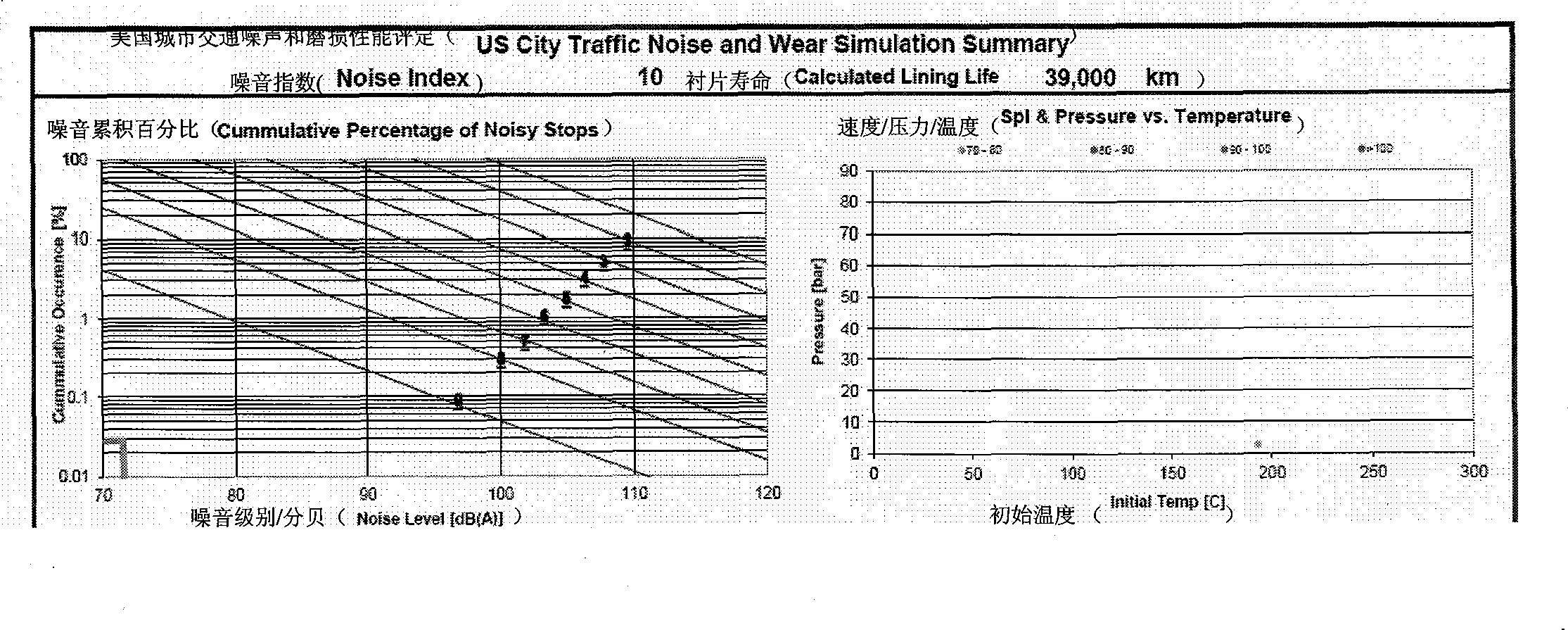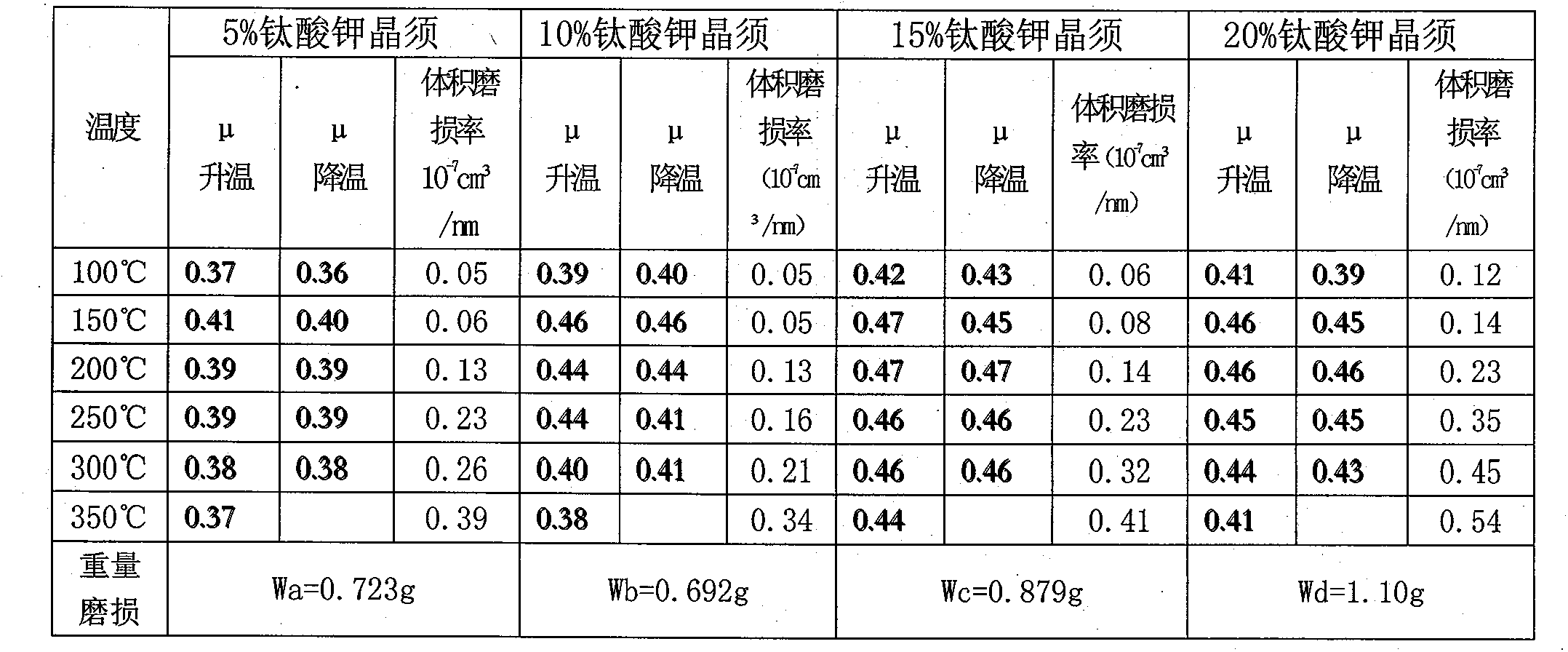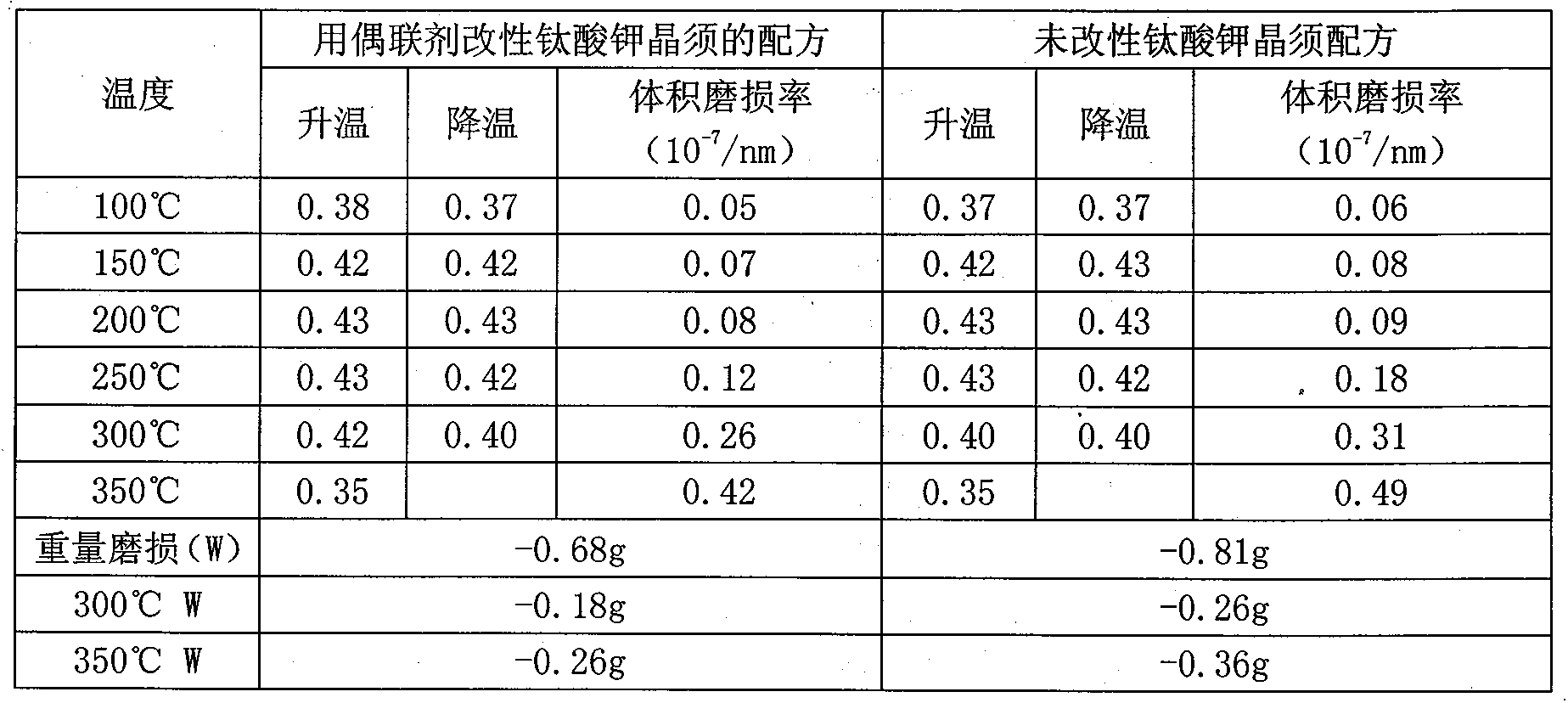Non-copper friction material
A technology of friction materials and reinforcement materials, applied in other chemical processes, chemical instruments and methods, etc., to avoid copper pollution, improve noise and vibration performance, and improve the overall performance of products
- Summary
- Abstract
- Description
- Claims
- Application Information
AI Technical Summary
Problems solved by technology
Method used
Image
Examples
Embodiment 1
[0017] Example 1: Comparison of friction and wear experiments of different contents of potassium hexatitanate whiskers in ceramic formulations (according to GB5763-2008)
[0018] Test formula weight percent: nitrile modified phenolic resin 12%; ceramic fiber 10%, aramid fiber 3%, mineral fiber 5%, calcium sulfate whisker 4%, potassium hexatitanate whisker 5%, 10% respectively , 15%, 20%; fillers are 12% flexible graphite, 8% friction powder, 6% aluminum oxide, 5% heavy magnesium oxide, 4% nitrile rubber powder, 6% vermiculite, and 20% barium sulfate, respectively. 15%, 10%, 5%. See Table 1:
[0019] Table 1 Different K 2 O·6TiO 2 Experimental comparison of whisker content: according to GB5763-2008
[0020]
[0021] The test comparison shows that: the ceramic formula containing potassium hexatitanate whiskers, because of its good thermal stability, as the dosage increases, μ tends to be stable, and the wear rate gradually decreases and then increases as the content incre...
Embodiment 2
[0022] Example 2: Comparison test between potassium titanate whiskers and ordinary potassium titanate whiskers treated by coupling agent surface (according to GB5763-2008)
[0023] The percentage by weight of the test formula: potassium hexatitanate whiskers 10%, barium sulfate 15%, and others are the same as Example 1.
[0024] Use KH-570 methacryloxysilane coupling agent to modify the surface of potassium hexatitanate whiskers. The process is: add methacryloxysilane to ethanol solvent in a mass ratio of 1:5, and stir thoroughly until transparent; add 5% sodium silicate solution during the stirring process, and slowly add 0.1% dilute hydrochloric acid to pH=4.5; add potassium hexatitanate whiskers, ultrasonically disperse for 5-10 minutes, and stir at a constant temperature of 80°C for 0.5 hours, filtered and dried to remove the solvent. See Table 2:
[0025] Table 2 Comparison of potassium titanate whisker surface modification and unmodification experiments: according to G...
example 3
[0028] Example 3: Brake bench performance
[0029] Test formula weight percent: 12% nitrile modified phenolic resin; ceramic fiber 10%, aramid fiber 4%, mineral fiber 5%, potassium titanate whisker 7%, calcium sulfate whisker 4%; flexible graphite 12% , friction powder 8%, aluminum oxide 6%, heavy magnesium oxide 5%, nitrile rubber powder 4%, barium sulfate 20%.
[0030] According to the requirements of ISO26867-2009, the results are as follows:
[0031] ① Friction coefficient μ: the total average value is 0.43, the minimum is 0.36, and the maximum is 0.47, of which:
[0032] In the cold state, the average value of μ is 0.37, the high-speed terminal brake μ is 0.41, the minimum value of μ is 0.34 in the first decay, the minimum value of μ is 0.37 at 500°C, and the minimum value of μ in the second decay is 0.37.
[0033] ②Abrasion: Lining thickness wears 0.41mm, lining quality wears 6g; dual thickness wears 0.03mm, dual mass wears 2.2g
[0034] See Table 3:
[0035] Table 3...
PUM
| Property | Measurement | Unit |
|---|---|---|
| shear strength | aaaaa | aaaaa |
Abstract
Description
Claims
Application Information
 Login to view more
Login to view more - R&D Engineer
- R&D Manager
- IP Professional
- Industry Leading Data Capabilities
- Powerful AI technology
- Patent DNA Extraction
Browse by: Latest US Patents, China's latest patents, Technical Efficacy Thesaurus, Application Domain, Technology Topic.
© 2024 PatSnap. All rights reserved.Legal|Privacy policy|Modern Slavery Act Transparency Statement|Sitemap



